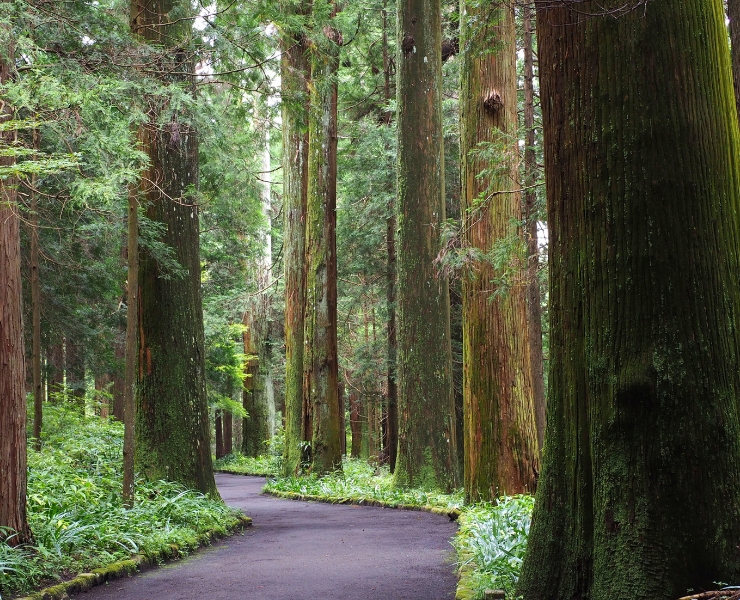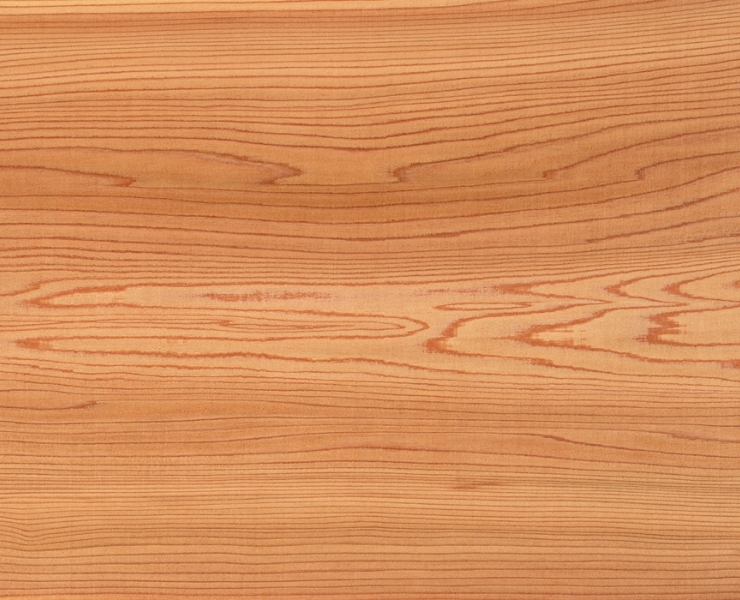Sugi
Cryptomeria japonicaSoftwood, conifer
Family: Cupressaceae
Sugi, along with Hinoki, is a representative tree species in Japan. As a coniferous tree unique to Japan, Sugi is widely popular and its applications are versatile. The origin of the name of Sugi is “immediately.” A circular trunk stretched straight from the earth towards the sky: so it was given its name.


FEATURES
The annual ring is clear and the difference in colors between heartwood and sapwood is also clear. Color of the heartwood ranges from peach to dark reddish brown and the preservative quality of the wood is moderate. The dry specific gravity ranges from 0.30 to 0.45, (0.38 on average) and it can be said that it is somewhat lightweight as Japanese coniferous trees. This becomes a big advantage when processing the wood. Sugi has a unique fragrance and you can feel it from buildings, interior decoration made from cedar wood, furniture, etc.
USAGE
Sugi is widely used in Japan as building materials (pillars, beams, boards etc.), ceiling boards, polished logs, furniture, fittings, fixtures, packaging, barrels, high quality disposable chopsticks, shipbuilding, and more. In recent years, application for plywood and glued laminated timber has expanded. Aged natural Sugi used to make cabinetry and ceiling board, etc. of decoration purpose have high added value. Also, “polished log”, which is a barked log polished with special sand, is used for alcove post, girder, interior, crafts,etc.
Treasures of Shosoin and Chinese chest of Sugi
Shosoin is called “World’s Repository”, and treasures which were gathered from all over the continent through the Silk Road in the Nara era remain the of that time even after 1300 years passed. It is said that medicines and perfumes still retain their efficacy, without losing the vivid colors and shapes of the treasures. Its excellent preservation function is attributed to the “Chinese chest made of Sugi”, in which the precious contents were preserved.

Photo:Research Information Archives,
Tokyo National Museum
Charactristic Table
| Specific gravity in air-dry |
Mean comefficient shrinkage for 1% change of moisture content(%) |
Surength(Mpa) | Modulus of elastcity in bending(GPa) |
|||
|---|---|---|---|---|---|---|
| Radial direction | Tangential direction | Bending surenght | Longitudinal compressive Surenght |
Shear strength parallel to grain |
||
| 0.38 | 0.1 | 0.25 | 64 | 34 | 5.9 | 7.4 |


